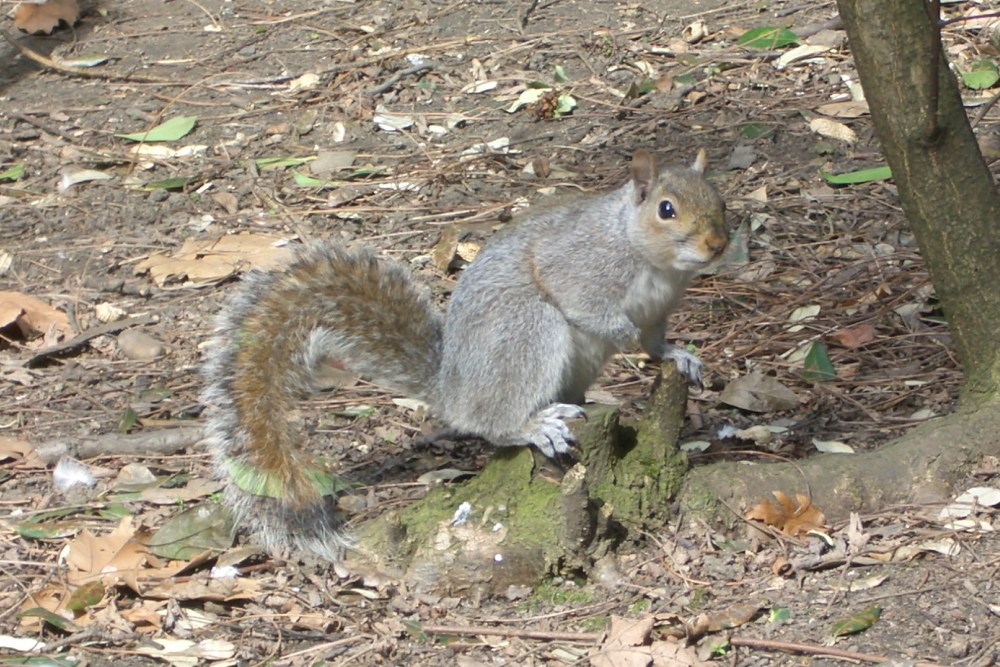Grey squirrel

Status
Non-native and common
Population
2,700,000
Scientific name
Sciurus carolinensis
Grey squirrels were introduced from North America in the 19th and 20th centuries. They are bolder and larger than red squirrels and, as their name suggests, have predominantly grey fur, although they can sometimes have patches of red. They are active during the day and are extremely agile climbers, although will spend a lot of time on the ground foraging. They sometimes bury excess food, often at the base of trees, to feed on during the cold winter months. They can be considered a pest because of damage to trees caused by stripping the bark, and because in gardens they may raid bird tables and feed on fruit crops or bulbs.
Head-body length: 24 – 28cm
Tail length: 19 – 24cm
Weight: 400 – 600g
Lifespan: Up to nine years
Reproduction
Two litters of 2 – 4 kits are born each year, one from February to April and the other from July to November. The young are weaned between 8 – 10 weeks.
Diet
Acorns, beech mast, flowers, nuts, bulbs, tree bark and tree shoots.
Habitat
Primarily woodland, but now common in urban areas, including gardens and parks.
Predators
Few natural predators.
Threats
Road traffic accidents.
Conservation status
Widespread and common; as an introduced species, grey squirrels don’t have a GB Red List assessment.
Population size and distribution
GB population: 2,700,000 (around 2,000,000 in England).Widely distributed throughout England and Wales, and are edging into Scotland and Northern Ireland. They are absent from much of continental Europe except for an expanding area in Northern Italy.
Did you know?
Grey squirrels are capable of running easily up and down trees by virtue of their strong claws and ‘double jointed’ ankles, which allow their feet to face forwards or backwards.
